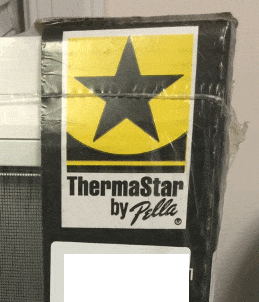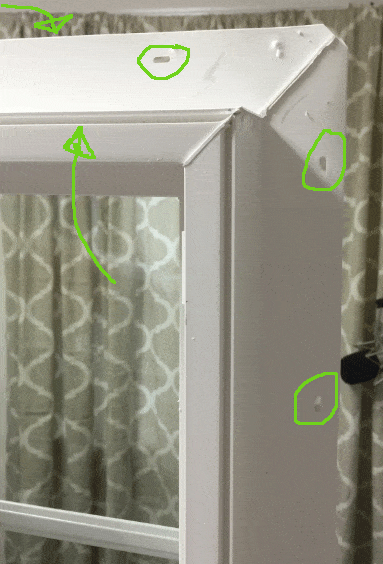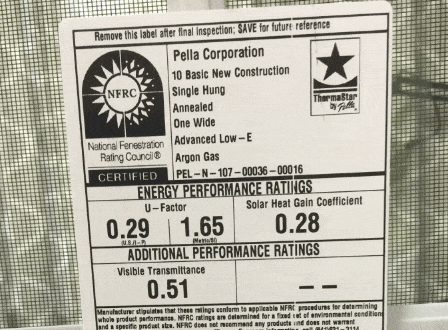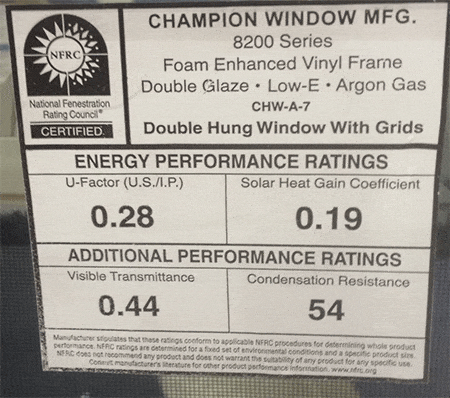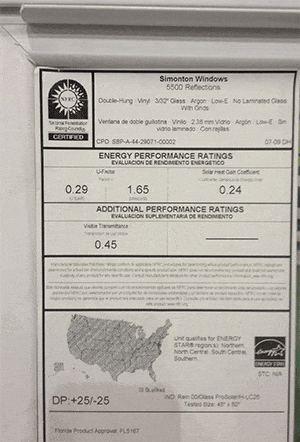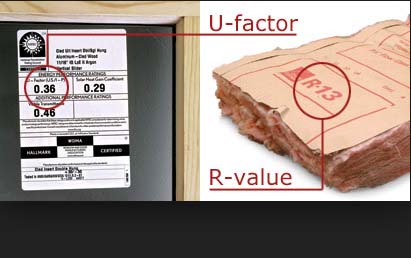Folks ask us all the time if they should get replacement windows or new construction windows. Are the windows the builder uses when they build a new home really any better or worse than the replacement windows that are sold by companies all over town?
We’re going to get to the bottom of this great debate right here. Get ready!
Before you can understand which option is better for you, you’ll need to understand what the terms mean. Basically a new construction or new home window is designed to be installed before the siding or brick is installed on the exterior of the home. A replacement window is designed to be installed after the siding or brick is already on the home.
Take a look at this picture. Here you can see two Pella windows that I bought from Lowes. The two models are very similar, but one has a fin that goes around the perimeter. This is called a nail fin and it is the only real difference between replacement vs new construction windows.

That’s the only difference. Now, some people of varying degrees of honesty may tell you there are other differences beyond the nail fin (also called a nail flange). Let’s take a look at what someone might say.
New constriction windows are builder grade windows. They’re cheap and flimsy.
This is often true and it’s something to watch out for, but it’s not always the case. You can see in our review of the ThermaStar by Pella Series 10 new construction window that many of them are cheap.
Manufacturers build new construction windows with builders in mind. Believe it or not they’re more focused on the builder who buys thousands of windows than you, the guy looking to install 15 new windows in your home.
They know that builders want windows fast and cheap so that’s what they make. Builders know that when you’re buying a new home you’re looking at the fancy tub and the shiny kitchen. The windows are often an afterthought so they don’t spend any more money than they need to.
Here’s one way to think about it. When you’re buying a new home you’re buying a whole lot of things all at once. You’re less focused on each individual thing. When you’re buying replacement windows you’r just buying windows. You’re focused on the windows and you’re trying to get the best products you can.
Manufacturers of both new construction and replacement windows know this very well and they prioritize quality and costs based on the typical customer for each product.
If you’re buying new construction windows and you’re looking for quality be careful. It’s easy to go wrong here.
New construction windows will give me more light than replacement windows.
This may be true, but it may not. You’ll need to have a good idea of how the windows will actually go in before you can make that determination. Remember, the only real difference is the nail flange. The window itself is the same.
Often times replacement windows are installed inside the existing wood window frame. This is called a pocket installation because the window is placed in a pocket in the old frame.
There is nothing wrong with this installation method. In fact all new vinyl windows have a 3.25″ jamb depth because they’re designed to be installed in a wood frame.
Could you get more glass area by removing the existing wood frame? Maybe, but maybe not. If you remove the wood frame a new wood frame would typically need to be installed. Sometimes this comes with the windows, sometimes the installer will build it on site, but it is typically part of the installation. Is the new wood frame any thicker or thinner than the old wood frame you removed?
I have no idea, it depends on your house and you’re installer, but the difference is probably not dramatic. This is often used as a sales tactic, but it typically doesn’t make any noticeable difference.
New construction windows form a better seal than replacement windows.
I would expect this idea is spread by folks who are more familiar with new construction window installations. When installing a new construction window it’s easy to see how it’s sealed. Typically the nail flange is fastened to the sheathing then there is a moisture barrier (like a house wrap) and flashing tape applied in a specific manor around the window. When done properly it looks solid and it’s easy to see that it’s done.
In a replacement window installation it’s harder to see because you’re relying on the seal of the existing frame behind the siding. There are literally millions of replacement windows installed each and every year with no epidemic of leaks so it’s safe to assume that if they’re installed properly there is no greater risk of a leak from a new construction or new home windows compared to replacement windows.
So, which one is better?
Like most things in the window business there isn’t necessarily an easy answer. In general new construction windows are cheaper and of lower quality than replacement windows, but there are nice new construction and cheap replacement windows. The best strategy we can suggest is to find some local experts to take a look at your home and make a few suggestions.
We know the window business can be difficult to navigate and we applaud you for taking the time to do your research before making a decision. We would suggest doing the same thing when calling local window companies. We’ve done some of the work for you. For starters you can find our list of the best local window companies right here.


